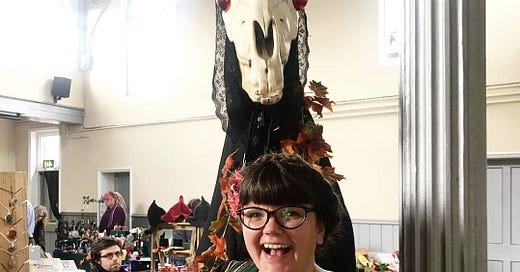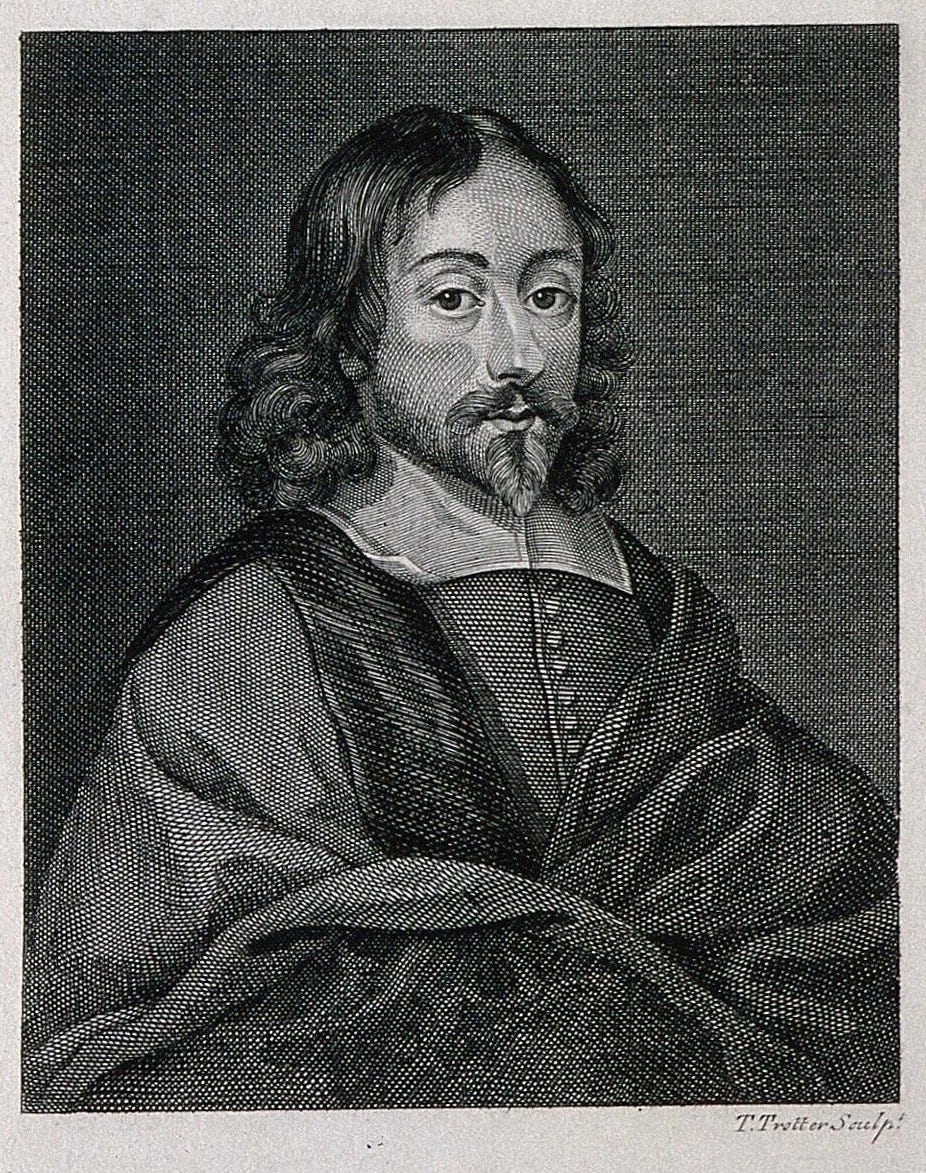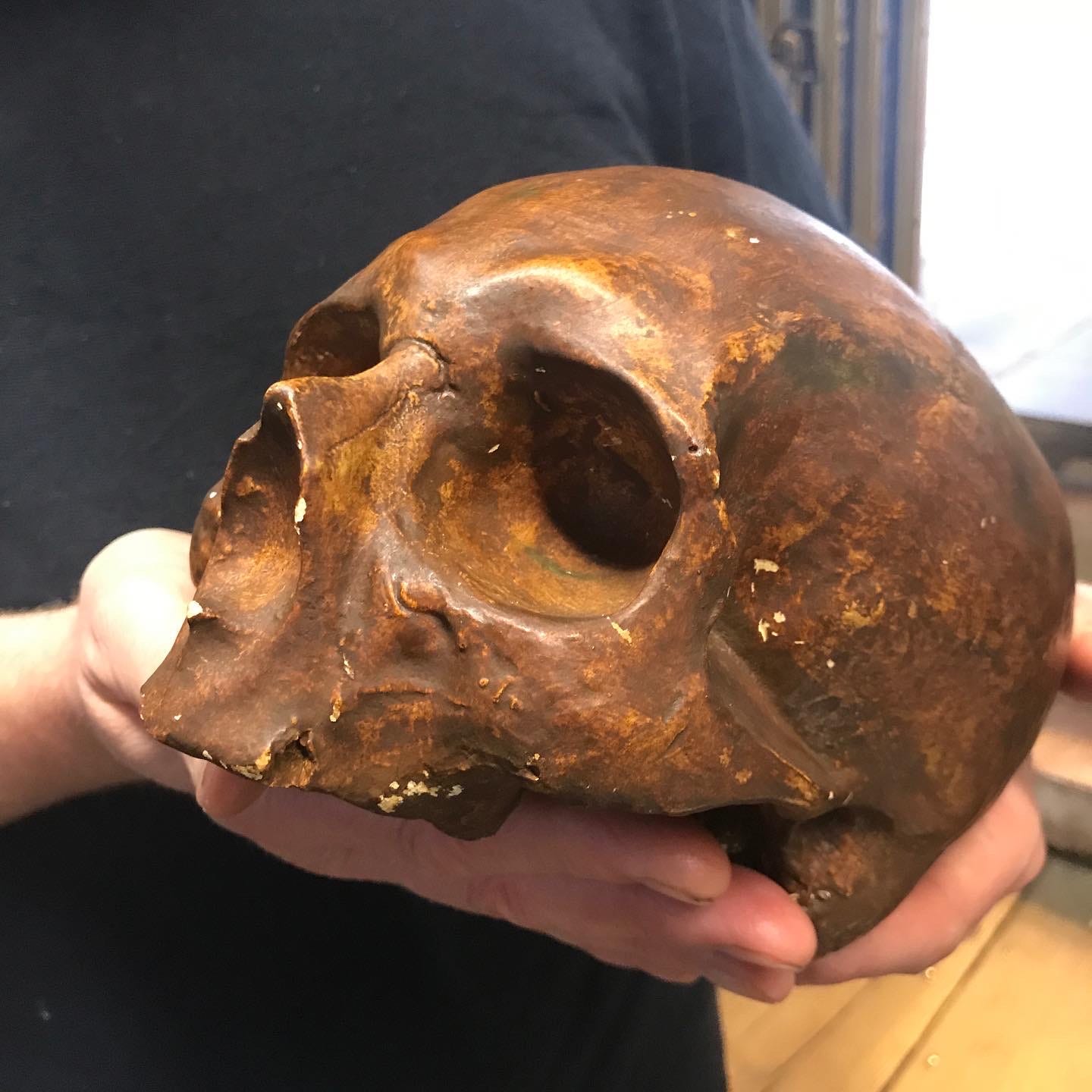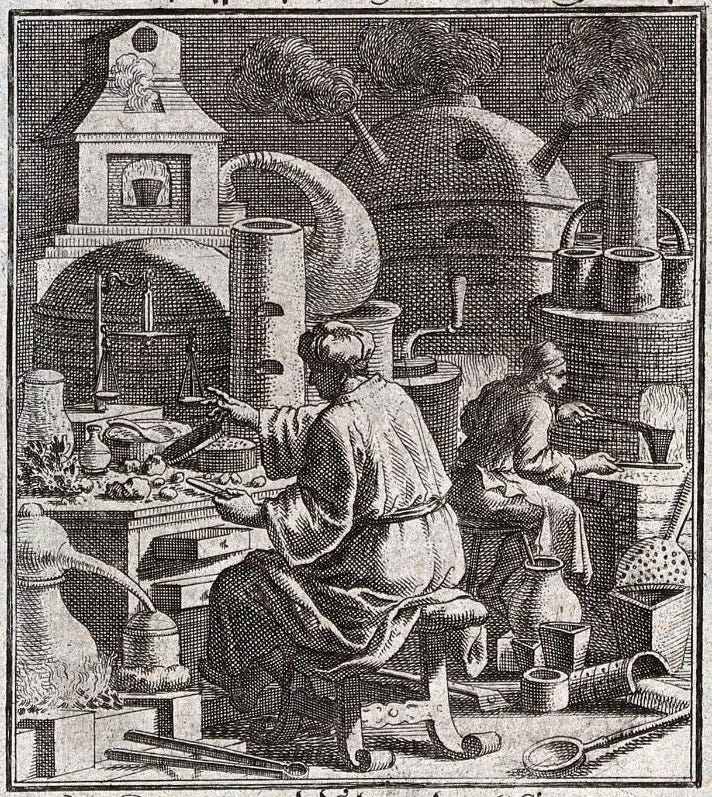Norfolk Folklore Society - November Newsletter
A note from the founder
Thank you all so much to signing up to the Norfolk Folklore Society newsletter. I really hope you enjoy the first instalment. I guess this would be a good opportunity to introduce myself.
For many years I worked at the Eastern Daily Press with my wyrd sister Stacia Briggs. While I was there Stacia and I came up with Weird Norfolk, a weekly feature and podcast which we like to describe as a cabinet of curiosities containing Norfolk’s forgotten folklore. But times change and I’ve now moved on from the Eastern Daily Press. Weird Norfolk continues though, Stacia still writes a wonderful weekly feature, and we still get together to podcast.
But things change and I left the EDP earlier this year. Leaving meant that I was finally able to set up the Norfolk Folklore Society, something I’d thought of doing for a while, but hadn’t had time to.
So here we are!
To date we’ve had two incredibly popular talks from speakers Val Thomas, from Living Norfolk Magic, and Nigel & Juliette from Out There Paranormal and I have excellent speakers booked in until February 2023. And now we have a monthly newsletter. Each month I will share details of the monthly talk, early bird access only for subscribers and Stacia will collate some themed topics to get you in the mood for the talk.
Although the group is called the Norfolk Folklore Society, I really don’t want to just focus on traditional folklore topics. I aim to present speakers from all kinds of fortean areas. I really believe that the paranormal, cryptozoology, ufology, witchcraft etc have a place in the study of folklore. I feel that these areas which we may consider to be quite modern are quite likely to become the folklore of the future.
I’m sure the society and this newsletter, like all the best folklore, will evolve over time and I’m looking forward to sharing the journey with you all.
Siofra
Our next Norfolk Folklore Society Talk
Chris Wood: An Alchemical Nexis in 17th-Century Norwich
30th November 2022 for the Norfolk Folklore Society
Wednesday 30th November 2022
7.30pm - Arboretum, 43 St. Benedicts St, Norwich NR2 4PG
We are thrilled to be joined by Chris Wood from the Ickeny Collection for this month’s Norfolk Folklore Society talk at Arboretum. Here’s what Chris says about his topic - An alchemical nexis in 17th-century Norwich.
The 17th century was a time of fear, violence and great changes in culture. The Civil Wars fractured families as much as politics, religious bigotry was the norm and pogroms against supposed witches were rife. At the same time, the very nature of knowledge itself was in dispute. Norwich provided a particular nexus for this philosophical turmoil, with the friendship of two physicians who moved in both refined and mundane spheres, and who stood at the tipping point between the old science of natural philosophy and the new, reductionist science of the so-called Enlightenment. One of these men is today well-known: Sir Thomas Browne, doctor and mystic, experimenter and philosopher. The other is less famous now: Arthur Dee, former doctor to English royalty and the Russian Tsar, alchemist and heir to the secrets of his father, the celebrated Elizabethan magus, Dr John Dee. When Arthur Dee died, he left his alchemical papers to Browne, who became a focus for the attention of influential people with an interest in such matters, particularly Sir Robert Paston and Elias Ashmole. This Norwich nexus was a late flowering of a way of thinking that was being superseded – but which left its seeds in literature, art and the very fabric of a city.
As subscribers to this newsletter, you get early access to tickets to our talks. Previous talks have sold out within hours so make sure you act quickly and follow the link to the Eventbrite listing. Tickets will be put on general release after three days.
We look forward to seeing some of you at Chris’s talk.
Inspired by this month’s talk theme, Stacia has put together a collection of interesting bits and bobs to give you an introduction to the players in the Alchemical Nexis.
Arthur Dee (1579 to 1651)
Arthur Dee was the eldest son of John Dee (a famous mathematician, astronomer, astrologer, teacher, occultist and alchemist who was court astronomer for Elizabeth I) and his third wife Jane Fromond.
An apprentice to his father, Arthur was fascinated with Dee’s pursuits which straddled magic and modern science, sorcery and philosophy. He settled in London with the intention of being a medic and at his door exhibited a list of medicines he said were certain cures for many diseases, became a physician to the Tsar Michael I of Russia and, while living abroad, wrote Fasciculus Chemicus, a collection of writings on alchemy.
Returning to England after the death of his wife Isabella, he became physician to King Charles I and on his retirement, moved to Norwich where he became friends with Sir Thomas Browne.
Thomas Browne
He was a man of many words, a collector of curiosities, an expert witness at a witch trial, a renowned doctor, the owner of a live ostrich and a genius who was fascinated with the cusp of life and death – and his long-held fear that his bones would one day become a black market trinket proved to be true.
Sir Thomas Browne, whose statue gazes over the Haymarket in Norwich (and whose brain and eye, carved in marble, sit beneath it), was a doctor and author whose fame earned him a knighthood when Charles II visited the city in 1671.
Born in Cheapside in London in October 1605, Browne was admitted to Winchester College, the oldest of England’s public schools, just before his 11th birthday and went on to study at Oxford University, where he learned about philosophy and metaphysics. He later studied medicine in France at the famous Montpellier Faculty of Medicine and then at Padua in Italy.
Returning to England after a further period of study in Holland, Browne set up his first medical practice in Yorkshire in 1634 and four years he received his English MD at Oxford, by which time he was living in Norwich on the suggestion of Sir Nicholas Bacon of Gillingham, where he set up his permanent medical practice.
He married Dorothy Mileham, the 20-year-old daughter of Edward Mileham of Burlingham St Peter, in 1641 and they set up household in St George’s, Tombland and a few years later moved to a large house in Haymarket and the pair had 12 children, despite his published disdain for “this triviall and vulgar way of coition”.
As his tombstone notes, Browne wrote “learned books”, the most famous of which was Religio Medici, which roughly translates to “A Doctor’s Faith” and was Browne’s attempt to reconcile religion and reason published in 1643, just as England descended into a civil war.
In Religio Medici, Browne touches on many topics, from creation to hallucinations and suicide (both terms he was the first to use, along with electricity, medical, ferocious, indigenous, migrant, coma, anomalous, prairie, carnivorous, ambidextrous, deductive and – one for the younger readers – swaggy), how “our ends are as obscure as our beginnings”, how North America lacks horses and that witches exist.
Virginia Woolf said of him: “We are in the presence of sublime imagination; now rambling through one of the finest lumber rooms in the world—a chamber stuffed from floor to ceiling with ivory, old iron, broken pots, urns, unicorns’ horns, and magic glasses full of emerald lights and blue mystery.”
But despite his masterly work for the express purpose of exposing “Popular Fallacies”, he not only believed in witches (and that elephants could write…), he acted on that belief in 1662 when he offered “expert” testimony at a trial in which two elderly and unpopular widows, Amy Duny and Rose Cullender from Lowestoft, were convicted of practicing witchcraft and subsequently hanged.
Called by the prosecution as “a Person of great knowledge”, he agreed the two women had indeed used the Devil’s help to afflict their village’s children, making them faint, fit and vomit up nails, pins, needles and half-pennies, and their ability to utter curses which caused wagons to overturn. Mice turned into screeching bats, bees forced nails into children’s mouths, cattle were bedevilled and a farmer said that he had been “vexed with lice of extraordinary bigness”.
When someone else in court suggested the “symptoms” were all phantom, a social experiment was carried out in court where the witnesses were blindfolded and led to believe that they were to be touched by one of the accused. When they were touched – by someone else entirely – the witnesses fell into fits.
Despite the scientific nature of the experiment, which one might imagine Browne would have appreciated, it was ignored and the women hanged. It is a bloody stain on Browne’s reputation as an intelligent and learned man, and one that cast a long shadow over the Salem witch trials, 30 years later.
Browne died on his birthday in 1682 and was buried at St Peter Mancroft church, almost next door to his home (now the site of Pret a Manger). In 1840, the coffin was accidentally opened when workmen were digging the grave of Mrs Bowman, the vicar’s wife, and the skull, still covered in hair, was removed.
The Yarmouth Mercury of December 23 1893 states: “Considerable interest has been excited in Norwich by a dispute concerning the skull of Sir Thomas Browne…in 1840 some unknown, in digging a vault, broke the lid of the coffin. His remains were examined by a local antiquary, who ordered the coffin and its contents to be re-interred.
“It appears, however, that the sexton took possession of the skull, which was purchased by a celebrated Norwich surgeon, and on his death was handed over to the Norfolk and Norwich Hospital Museum, where it now remains. Recently the attention of the Vicar of St. Peter was called to the circumstances, and naturally regarding the removal as an act of desecration and dishonour, the Vestry requested the Hospital authorities to restore the skull of this illustrious man to its resting place. This application, however, has been refused.”
Keen to hold on to their precious relic, which was displayed next to a glass case which contained a section of Browne’s beard (which wasn’t brown, somewhat irritatingly), the row rumbled on until 1922 during which a casket was made in 1901 for the skull and a statue of the medic was revealed on Hay Hill in 1905.
On January 26 1922, the skull was brought from Norwich to the Museum of the Royal College of Surgeons by a special messenger and a letter from Sir Hamilton Balance, written on behalf of the Norfolk and Norwich Hospital to the conservator, informing him that it was to be restored to its ancient resting place under the floor of the chancel of St Peter Mancroft but that before this was done, the staff desired an exact and permanent record of its form and features. It is now kept in the church, close to the buried original. At the time of Browne’s second interment, the vicar presiding recorded the age of the deceased as “317 years”.
Browne debunked many popular myths of the time, including that badgers have two legs shorter on one side for running along ploughed fields Sir Thomas Browne was worried about the theft of his bones before he died. He said: “But who knows the fate of his bones, or how often he is to be buried? Who hath the oracles of his ashes, or whither they are to be scattered?”, Browne wrote in 1658, arguing that “To be gnawed out of our graves, to have our skulls made drinking-bowls, and our bones turned into pipes to delight and sport our enemies, are tragical abominations.”
Some of the other words Thomas Browne invented…
Additionally, ambidextrous, antediluvian, approximate, biped, bisect, botanical, capillary, carnivorous, coexistence, coma, compensate, complicated, continuum, convulse, cryptography, cylindrical, cynicism, depreciate, discrimination, disruption, dissemination, electricity, elevator, executive, extradictionary, factitious, ferocious, follicle, gypsum, hallucination, illustrative, inactivity, incisor, indigenous, insecurity, invariably, locomotion, praying mantis, medical, narwhal, non-existence, ossuary, parturition, patois, perspire, prairie, precipitous, precocious, prefix, presumably, protrusion, secretion, selection, subsidence, temperamental, transferable, transgressive, and ulterior.
He also provided one of the earliest uses of the word ‘computer’ (though not, as has sometimes been claimed, the very first).
Browne invented 784 new words.
Five other ‘facts’ that 17 th century myth-buster Browne proved were wrong
There was a common belief that toads and spiders repelled each other. Browne put a toad in a glass container and added several spiders. The spiders walked all over the toad, the toad ate the spiders.
It was also believed that diamonds could be broken by the blood of a goat. Browne tried it and proved it was not the case.
He proved that garlic didn’t affect magnetism.
…and that dead kingfishers couldn’t tell the weather.
Browne revealed the truth about chameleons, namely that they didn’t exist on air, but flies.
Traces of Thomas Browne to find in Norwich
In 1956, when builders were creating the foundations for a shop called Lennards Shoes at 3-5 Orford Place, they found the medieval wells beneath the building and two ceilings, one removed from Browne’s study where he wrote much of his work, are in the care of Norwich City Council. One is in the stores at Strangers’ Hall, which also has two of Browne’s garden house doors.
Browne’s intricately carved wooden overmantel is in the stores at the Museum of Norwich.
A replica of Browne’s skull (see above) can be seen by appointment at St Peter Mancroft church. He was buried in the church, too. There are further pieces of funerary memorabilia in a glass case in the St Nicholas Chapel at the church, including half of Browne’s coffin plate which reads: “Sleeping in this coffin, he converts lead into gold by the dust of his alchemic body.”
The meadow which Browne leased and where he extended the botanical gardens he had at Orford Place is now a car park close to the Cathedral. A green plaque opposite the garages next to 26 The Close notes: “Sir Thomas Browne, 1605 – 1682. Physician and author of Religio Medici had a lease of a meadow on the site behind this plaque.”
The statue of Sir Thomas Browne by Henry Alfred Pegram at the top of Hay Hill which was placed there in 1905.
The homage to Thomas Browne, also on Hay Hill, by Anne and Patrick Poirier, 2007. There are 20 pieces of sculpture and 22 lights which are arranged in a pattern known as a quincunx, a five-pointed diamond shape which Sir Thomas believed existed throughout nature.
Sir Thomas Browne was knighted at St Andrew’s Hall by King Charles II.
The Lowestoft Witches and the legend of their ‘rain-making’ stones
According to legend, stones placed in Lowestoft’s Belle Vue Park in Tudor times run down to the sea at the first chime of midnight and can be used as ‘rain-makers’.
Strange stories lie in the least expected places: a pile of stones in Belle Vue Park in Lowestoft is said to run to the sea on the first chime of midnight at midsummer to bathe.
These are the so-called Witches’ Stones, a rough cairn of stones which lies just inside the south gate of the park and which was once a vital lifeline to those at sea. Believed to be the remains of a Tudor warning beacon built in 1550 by the Marquis of Northampton, one of a pair of warning fires in the town, the other at the top of Green Score, now Links Road. Fires would blaze from a platform on top of the cairn to warn ships of forthcoming emergencies, early forerunners to lighthouses and possibly the spark that ignited a legend which has persisted over the centuries.
It is said that unless the stones are bathed in fire, they will race down to the seashore at the first strike of midnight chimed from the town hall clock to bathe in the water before rushing to be back in place by the last stroke of 12. Some say this happens only at midsummer, others that it happens far more frequently as the stones shed the mortar that binds them for a joyful dash for the water. Others claim that the stones are ‘weather makers’ and can cause rain to fall if water is poured over them.
But why the name? It is believed that the Witches’ Stones, now topped with an anchor, bear their name due to a shameful episode from Lowestoft’s past, where two women were accused of witchcraft and hanged in 1662. Amy (or Ann) Denny and Rose Cullender were tried at Bury St Edmunds after an unlucky 13 accusations were brought against them, including that they had bewitched people following disagreements, cursed animals and damaged property.
The pair had been brought to trial by Samuel Pacy, a wealthy fish merchant and property owner in Lowestoft who had refused to sell Amy any of his wares and, according to Pacy, was then punished by Denny’s dark arts. His daughter Deborah “was taken with most violent fits, feeling most extreme pain in her stomach, like the pricking of pins and shrieking out in a most dreadful manner like unto a whelp, and not like unto a sensible creature…”

Throughout her fits, Deborah claimed it was Amy who had caused them. Her sister Elizabeth then fell ill, and the pair suffered for two months with a range of ailments ranging from lameness and soreness to a loss of speech and dreadful reactions to words such as ‘Lord’, ‘Jesus’ and ‘Christ’. The sisters also began to blame another reputed witch, Rose Cullender, saying that both women would appear to them and warn them that more torment was on its way.
At their trial, other neighbours claimed the women had wronged them: Dorothy Durrant said Denny had murdered her 10-year-old daughter and almost killed her infant son William, who had been cured by counter-magic from Great Yarmouth.
A Dr Jacobs had told Dorothy to hang baby William’s blanket over the fireplace and burn anything found in it: when she took it down at night, a large toad fell out which was duly burned and exploded with a flash of light. There were accusations that carts had been bewitched and animals cursed – Rose Cullender was accused of bringing forth “a great number of lice of extraordinary bigness”– chimney collapses were blamed on the women, the ‘evidence’ was plentiful if unfounded. Neither woman admitted their guilt, but both knew that defending themselves was pointless. They died on March 17 1664.
The link to the swimming stones of Belle Vue Park is said to be that – in life - Amy Denny was in the habit of sitting on the stones and throwing curses at passers-by, an anti-social habit that would – later – possibly lead to her terrible downfall.
Alchemy
In 2018, Megan Piorko of Georgia State University, discovered a coded text in one of Dee’s alchemical notebooks which was a ‘recipe’ for the philosopher’s stone, a mythical elixir of life capable of changing base metals into gold or silver and imparting immortality.
The code describes the processing of an alchemical “egg” in a slow-burning furnace popular with alchemists. Then there must be a wait for the three universal alchemical phases to occur: black, white, and red. If all steps are followed correctly, "you will have a truly gold-making elixir by whose benevolence all the misery of poverty is put to flight and those who suffer from any illness will be restored to health.”
Another Norfolk link sees Robert Paston (1631- 1683), the first Earl of Yarmouth, become obsessed with creating gold from the philosopher’s stone and spending 20 years on a fruitless (but ruinously expensive) mission to strike gold.
In a letter to Sir Thomas Browne, he informed the Norwich physician: “I have at Oxnead seen this salt change black as ink, I must, at the lowest, have an excellent aurum potable, and if the signs we are to judge in Sendivogius’ description be true, I have the key which answers to what he says, that if a man has that which will disolve [sic?] gold as warm water doth ice, you have that which gold was first made in the earth.”
There is a painting in the Norwich Castle Museum, of Robert Paston and his father William’s artefact collection known as The Paston Treasure.
Further reading:
Read Charlotte Fell-Smith’s 1909 work on John Dee here:
http://www.johndee.org/charlotte/
Take the quiz: How Sir Thomas Browne are you? Here
https://www.sirthomasbrowne.org.uk/how-thomas-browne-are-you.html
Follow the trial of the Lowestoft Witches on Ivan Bunn’s website here:
http://www.lowestoftwitches.com
Find out more about alchemy and the attempts by alchemists to make gold from
base metals in this online talk from the Royal Society of Chemistry’s John
Hudson here:
Read about the Philosopher’s Stone in this guide from the British Library:
https://www.bl.uk/a-history-of-magic/articles/secrets-of-the-philosophers-stone










